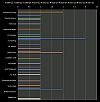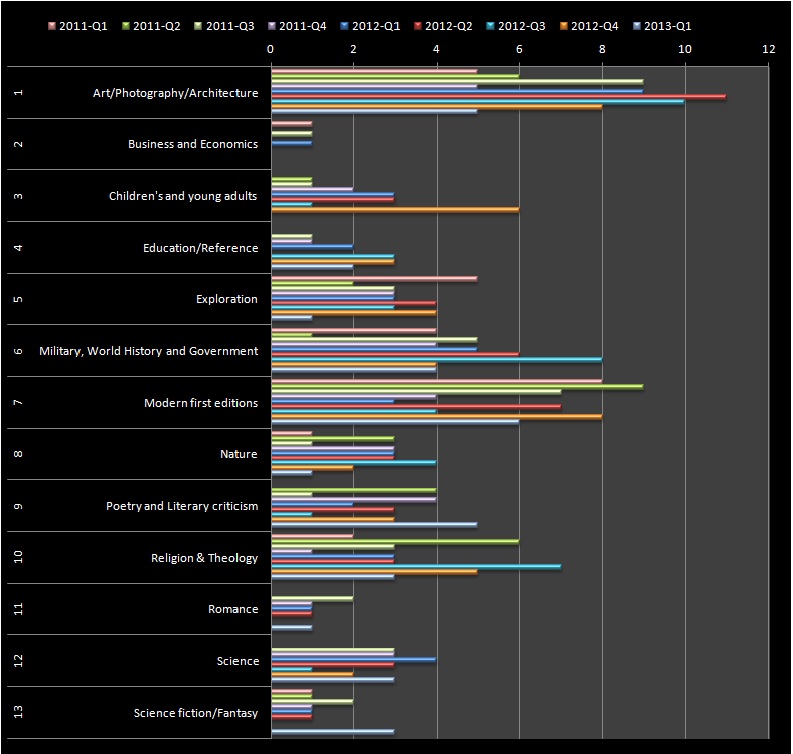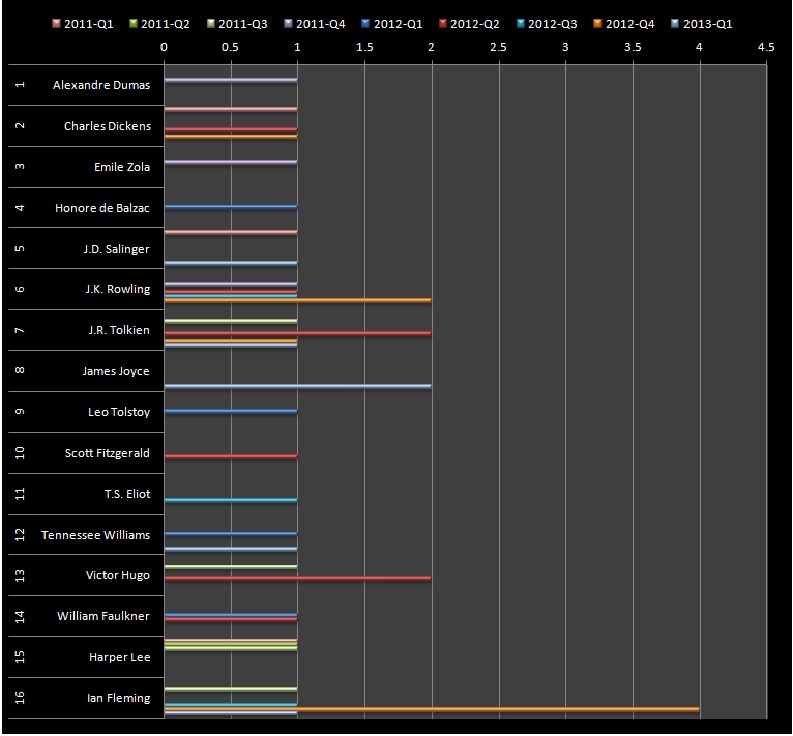 The first quarter of the year was another quarter of solid growth. As always, some of the genre and some of the authors in our Rare Books Sale Monitor (RBSM) performed better than others, but healthy fluctuations from one quarter to the next is the way sale pricing behaves. Take, for example, last quarter’s big gains attained by Ian Fleming; the increased interest was bound to drive prices higher and eventually level demand off. In fact, prior to observing a big jump in sales, usually at new higher prices, the general buyer sentiment is that prices are low enough offering a buying opportunity. New demand is often fueled by, and associated with, new information or acknowledgement that a particular work or topic is getting scarcer. A new film or a 50th year anniversary attracted attention that trickled down to the author’s work.
The first quarter of the year was another quarter of solid growth. As always, some of the genre and some of the authors in our Rare Books Sale Monitor (RBSM) performed better than others, but healthy fluctuations from one quarter to the next is the way sale pricing behaves. Take, for example, last quarter’s big gains attained by Ian Fleming; the increased interest was bound to drive prices higher and eventually level demand off. In fact, prior to observing a big jump in sales, usually at new higher prices, the general buyer sentiment is that prices are low enough offering a buying opportunity. New demand is often fueled by, and associated with, new information or acknowledgement that a particular work or topic is getting scarcer. A new film or a 50th year anniversary attracted attention that trickled down to the author’s work.
Oftentimes we are asked to publish more details on how the RBSM computes the results that get reported. While we do feel that it is a valid request, we also reserve the right to maintain a level of engineering work as proprietary that is not publicly released. Our team of engineers is working hard to solidify the RBSM’s model with the project undergoing continuous improvements.
The current version of the RBSM is based on a simple random sampling method that is used to select approximately 1,000 market active rare books whose sales are closely monitored. Particular attention is given to factoring in any special attributes such as signatures, condition, provenance and so forth, which may vary from copy to copy. The sample is weighted and benchmarked to ensure that they accurately reflect the categories and authors that they represent. In targeting to report on the majority of the most important rare book categories and some authors from North America and Europe, we update the sample on a frequent basis to account for new trends and activity within this domain.
For each quarter, actual sales that occurred during the three month period during auctions, on-line sales, and book fairs are obtained (either reported or imputed), and summed and benchmarked to prior quarter weighted sales. The sampling error due to the difference between the results obtained for the sample rather than a complete enumeration of the total sale population is estimated to be of a small variation. A more significant nonsampling error that encompasses insufficient coverage of the universe of rare book sales in private transactions, mistakes in the recording of data and other processing, is estimated to be of a larger scale. Although not directly measured, continuous effort and upgrades are put in, in order to minimize the effects of non sampling error as much as possible.
In this first quarter of the year, the sampling performance recorded, included some common trends, but also some new observations. Historically 1st quarters have shown a setback for categories such as Children’s books and Religion and Theology, with 2013 being no exception. The more popular Art, Photography and Architecture, as well as Modern Firsts have maintained a solid performance while the big surprise on the upswing came from books of Science and Science fiction. On the opposite side of the spectrum, a category that has been consistently strong throughout 2012 – Exploration, is finally taking a breather. In the author breakdown, J.D. Salinger and J.R. R. Tolkien are reaching new heights, while Ian Fleming is finally reporting back to base after some of those Jonathan Cape first printings took off into the stratosphere.


{ 0 comments… add one now }
{ 1 trackback }